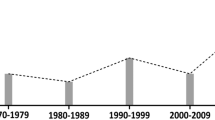Abstract.
The cuticle is a complex structure of soluble lipids, lipid polymers and polysaccharides. In addition to its functions to reduce water loss and provide a protective barrier, its mechanical properties may be significant to plant growth and development. We investigated the cuticle of Cirsium horridulum Michx. because of its involvement in the thigmonastic contraction of staminal filaments. The staminal filaments and portions of the style are surrounded by a highly elastic cuticle in contrast to the rigid cuticle of the corolla and leaves. Our aim was to determine if the biochemical composition affected the elasticity of the cuticle. We discovered that the ratio of carbohydrates to lipids is 1:7 in floral parts but 2:1 in leaf cuticle. Esterified cutin components represented about 80% of the cuticle and di-hydroxyhexadecanoic acids were the major monomers of cutin, regardless of origin. The cutin of elastic tissues is characterized by a higher content of tri-hydroxy monomers than the cutin of rigid tissues. The data suggest that hydroxyl groups enhance the hydrophilic character of the cuticle and contribute to cuticular elasticity.
Similar content being viewed by others
Author information
Authors and Affiliations
Additional information
Electronic Publication
Rights and permissions
About this article
Cite this article
Marga, F., Pesacreta, T.C. & Hasenstein, K.H. Biochemical analysis of elastic and rigid cuticles of Cirsium horridulum . Planta 213, 841–848 (2001). https://doi.org/10.1007/s004250100576
Received:
Accepted:
Issue Date:
DOI: https://doi.org/10.1007/s004250100576




